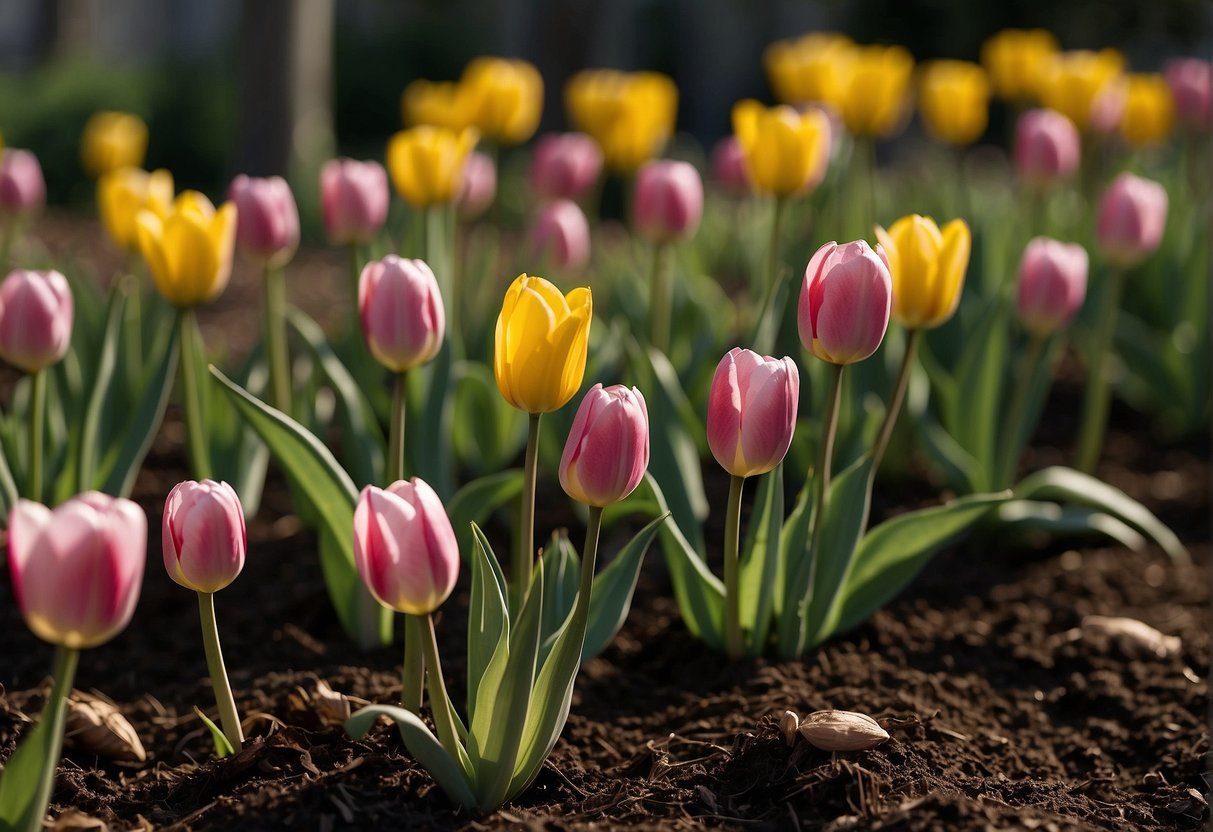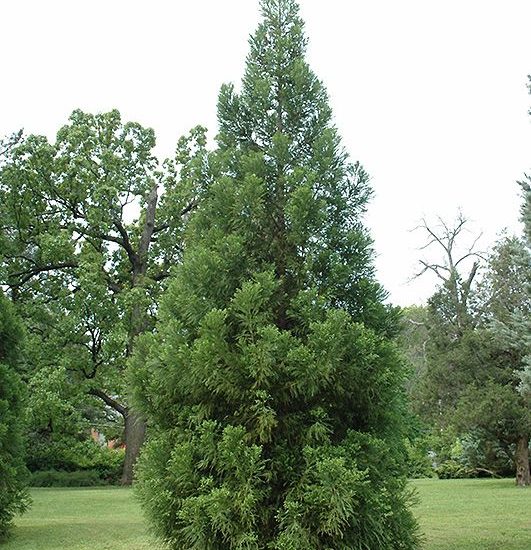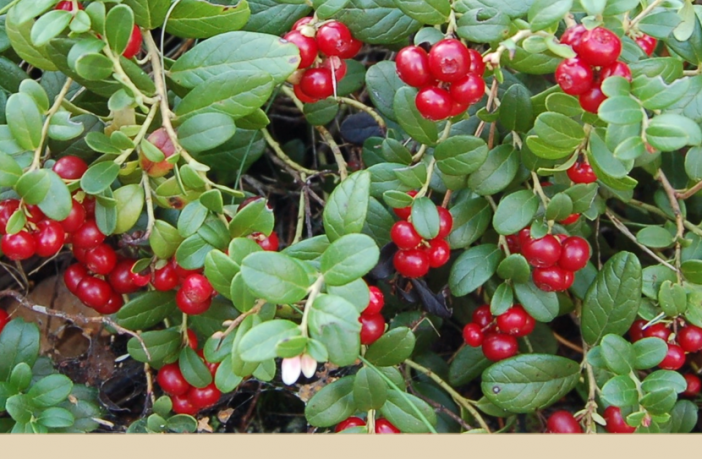What to Do with Tulips After They Bloom: Expert Tips and Advice
Tulips are among the most popular flowers in the world, and for good reason. They come in a wide range of colors and varieties, and their elegant, cup-shaped blooms are a sure sign of spring. But what should you do with your tulips after they’ve finished blooming? Should you cut them back, leave them alone, or dig them up altogether?

The answer to this question depends on a few factors, including the type of tulip you have, the climate you live in, and your personal preferences. In general, however, there are a few things you can do to help your tulips thrive after they’ve bloomed. These include deadheading the spent flowers, fertilizing the soil, and ensuring that the bulbs are properly stored over the summer months.
In this article, we’ll take a closer look at what to do with tulips after they bloom. We’ll explore some of the most common questions and concerns that gardeners have about tulip care, and we’ll offer some practical tips and advice to help you get the most out of your tulips year after year. Whether you’re a seasoned gardener or a beginner, this article is sure to provide you with the information you need to keep your tulips looking beautiful and healthy for years to come.
Post-Bloom Care and Maintenance
After tulips have bloomed, it is important to take proper care of them to ensure their growth in the next season. Here are some essential post-bloom care and maintenance tips for tulips.
Deadheading Spent Blooms
Deadheading spent blooms is an important step in post-bloom care. This involves removing the dead flowers from the plant to encourage new growth. Gardeners should cut off the spent blooms using sharp scissors or pruning shears, being careful not to damage the foliage or stem. Deadheading also helps to prevent the tulip from self-seeding and diverting energy away from bulb formation.
Watering and Fertilizing
Watering and fertilizing are crucial for the growth and health of tulips. Gardeners should continue to water the tulips regularly, especially during dry spells, to keep the soil moist. Fertilizing with a balanced fertilizer can also help to provide the necessary nutrients for the tulips to store energy for the next season. Gardeners should avoid fertilizing immediately after blooming, as this can lead to excessive foliage growth and reduced bulb formation.
Managing Foliage and Energy Storage
Managing foliage and energy storage is another important aspect of post-bloom care. Gardeners should avoid cutting back the foliage until it has turned yellow and withered, as this is when the tulip is storing energy for next year’s growth. Once the foliage has completely withered, gardeners can carefully remove it from the plant. It is also important to avoid braiding or tying the foliage, as this can damage the plant and reduce its ability to store energy through photosynthesis.
By following these post-bloom care and maintenance tips, gardeners can help their tulips to thrive and bloom again in the next season.
Tulip Bulb Storage and Division
When to Dig Up Tulip Bulbs
Tulips are typically grown as perennials, meaning that they come back year after year. However, in order to ensure that the bulbs remain healthy, it’s important to dig them up and store them properly after they’ve finished blooming. The best time to do this is in the late spring or early summer, once the foliage has died back completely.
How to Store Bulbs Properly
Storing tulip bulbs properly is crucial to their health and longevity. After digging up the bulbs, it’s important to remove any excess soil and debris, and then allow them to dry completely in a cool, dry place for a few days. Once they’re dry, they can be stored in a paper bag or mesh bag in a cool, dry place until it’s time to replant them in the fall. It’s important to avoid storing the bulbs in plastic bags or containers, as this can cause them to rot.
In addition to proper storage, it’s also important to fertilize the bulbs before replanting them. A bulb fertilizer can be applied to the soil before planting, or a small amount can be added to the soil when the bulbs are replanted.
Dividing Tulip Bulbs for Propagation
Dividing tulip bulbs is a great way to propagate new plants and ensure that existing bulbs remain healthy. This should be done every few years, or whenever the bulbs start to become overcrowded. To divide the bulbs, simply dig them up and separate them into smaller sections, making sure that each section has at least one healthy stem and root system. These smaller sections can then be replanted in a new location or shared with friends and family.
It’s important to note that not all tulips are suitable for dividing. Some varieties, such as Darwin tulips, are better left undisturbed. If you’re unsure whether your tulips can be divided, consult a gardening expert or visit a local garden center for advice.
Replanting Strategies for Tulip Bulbs

Choosing the Right Time to Replant
The best time to replant tulip bulbs is in the fall, after the flowers have bloomed and the leaves have withered. This allows the bulbs to store up nutrients for the next blooming season. Gardeners should wait until the soil temperature has cooled down to around 60°F (15°C) before planting. This is usually around early fall in most regions.
Soil Preparation and Planting Depth
Tulip bulbs thrive in well-drained soil that is rich in organic matter. Before planting, the soil should be loosened to a depth of at least 12 inches (30 cm) and mixed with compost or other organic matter. The bulbs should be planted at a depth of 6-8 inches (15-20 cm) and spaced about 4-6 inches (10-15 cm) apart. When planting in containers or pots, use a well-draining soil mix and make sure the container has drainage holes.
Spacing and Arrangement in the Garden
When planting tulip bulbs in the garden, gardeners should consider the height and color of the cultivars they are using. Taller varieties should be planted in the back of the garden bed, while shorter varieties can be planted in the front. Mixing different colors and cultivars can create a stunning display. To achieve a strong performance, bulbs should be planted in groups of at least 10-15 bulbs.
After planting, gardeners should water the bulbs thoroughly and mulch with a layer of compost or other organic material. This will help to keep the soil moist and protect the bulbs from extreme temperature changes.
By following these replanting strategies for tulip bulbs, gardeners can ensure that their flowers will continue to thrive year after year.
Protecting Tulips from Pests and Diseases

Tulips are a beautiful addition to any garden, but they are susceptible to pests and diseases that can damage or kill them. Protecting your tulips from these threats is essential to keep them healthy and thriving. Here are some tips for identifying common tulip pests and diseases, preventing and treating diseases, and controlling pests using natural and chemical methods.
Identifying Common Tulip Pests
Tulips are vulnerable to a variety of pests, including aphids, spider mites, and bulb mites. Aphids are tiny insects that suck sap from the tulip leaves and stems, causing them to yellow and wilt. Spider mites are also tiny pests that suck sap from the leaves, causing them to turn yellow and dry out. Bulb mites, on the other hand, feed on the tulip bulbs, causing them to rot and die.
Disease Prevention and Treatment
Tulips are also vulnerable to diseases such as tulip fire, gray mold, and botrytis. Tulip fire is a fungal disease that causes the leaves to turn brown and wilt. Gray mold is a fungal disease that causes the tulip petals to turn brown and mushy. Botrytis is another fungal disease that causes the tulip petals to turn brown and wilt.
Preventing diseases is the best way to keep your tulips healthy. You can prevent diseases by planting tulips in well-draining soil, avoiding overwatering, and removing any infected plant material. If your tulips do get infected with a disease, you can treat them with fungicides or by removing the infected plant material.
Natural and Chemical Control Methods
Controlling pests and diseases using natural methods is an effective and environmentally friendly way to protect your tulips. You can use mulch made from bone meal or other organic materials to deter pests and improve soil health. You can also naturalize your tulips by planting them in a naturalistic style that mimics their native habitat.
Chemical control methods such as insecticides and fungicides can also be effective in controlling pests and diseases. However, it is important to use these chemicals carefully and according to the manufacturer’s instructions to avoid harming beneficial insects and pollinators.
In conclusion, protecting your tulips from pests and diseases is essential to keep them healthy and thriving. By identifying common tulip pests and diseases, preventing and treating diseases, and controlling pests using natural and chemical methods, you can ensure that your tulips will continue to bloom beautifully for years to come.
Encouraging Tulips to Bloom Again

Tulips are a popular choice for gardens and cut flowers due to their vibrant colors and unique shapes. After the blooms have faded, it is important to take proper care of the plant to encourage re-flowering the following year. Here are some factors that affect re-flowering and care tips for both perennial and annual varieties.
Factors Affecting Re-flowering
Several factors impact the ability of tulips to re-flower, including:
- Development of Seeds: Tulips put a lot of energy into seed development after blooming, which can reduce their ability to store energy for next year’s bloom. Deadheading spent blooms before seed heads develop can help redirect the plant’s energy towards bulb development.
- Ground Level Temperature: Tulips require a period of cold temperature to stimulate flower development. If the ground level temperature is not cold enough during winter, the plant may not re-flower the following year.
- Fertilizing: Over-fertilizing can cause yellowing of the leaves and reduce the plant’s ability to store energy for next year’s bloom. It is best to fertilize tulips in early fall before the ground freezes.
- Watering: Tulips require consistent moisture during their growing season. Overwatering can cause the bulbs to rot, while underwatering can cause the plant to stress and reduce its ability to re-flower.
Care for Perennial and Annual Varieties
Perennial tulips can re-flower for several years if cared for properly. After blooming, it is important to cut back the stem to ground level and allow the leaves to yellow before removing them. This allows the plant to store energy in the bulb for next year’s bloom. In late spring, it is also important to fertilize the plant with a balanced fertilizer to promote bulb development.
Annual tulips are typically treated as disposable plants and are discarded after blooming. However, potted tulips can be saved and encouraged to re-flower the following year. After blooming, cut back the stem to ground level and continue to water and fertilize the plant until the leaves yellow. In early fall, remove the bulb from the pot and store it in a cool, dry place until planting again in the spring.
By following these care tips, gardeners can encourage their tulips to re-flower and enjoy their vibrant blooms year after year.
Frequently Asked Questions

How should I care for tulip bulbs after the blooms have faded?
After the tulip blooms have faded, it is important to cut off the flower heads so that the plant can focus on storing energy in the bulb. The foliage should be left to die back naturally, as it provides nutrients to the bulb. It is also important to avoid watering the plant during this time, as excess moisture can lead to bulb rot.
Can tulips rebloom in the same year, and if not, when should I expect them to bloom again?
Tulips are not able to rebloom in the same year, as they need time to store energy in the bulb for the next growing season. Depending on the variety, tulips will typically bloom again in the following spring.
Is it necessary to dig up tulip bulbs annually, or can they be left in the ground?
Tulip bulbs can be left in the ground for multiple years, but it is important to ensure that the soil is well-drained to prevent bulb rot. If the soil is heavy or prone to waterlogging, it may be necessary to dig up the bulbs annually and store them in a cool, dry place until the next planting season.
What are the steps to properly cut back tulips post-flowering to encourage regrowth?
To encourage regrowth, it is important to cut off the flower heads once they have faded. The foliage should be left to die back naturally, as it provides nutrients to the bulb. Once the foliage has turned yellow, it can be cut back to ground level.
How can I propagate tulip bulbs to increase my collection?
Tulip bulbs can be propagated by removing the offsets, or small bulbs that form at the base of the parent bulb. These offsets can be carefully detached and planted in a new location, where they will grow into new tulip plants.
What flowers or plants are recommended to plant after tulip season ends?
After tulip season ends, it is recommended to plant summer-blooming bulbs such as dahlias or lilies, or to plant annual flowers such as petunias or marigolds. This will ensure that your garden remains colorful and vibrant throughout the growing season.



This was our first year with tulips and a bag of bulbs were gifted to us. We planted in the fall and had beautiful blooms. We did not know to dead head the spent blooms and now we have what remains. The stem, seed pod on top of the stem and several leaves. Since we have already done it wrong, what to do now? Can the seed pods be used for seeds in the future? Do we immediately cut them off? I’m just sick that we may have damaged the bulbs and not have the beautiful blooms we had this year. Please help!!?
First off, it sounds like you did an amazing job for your first time with tulips. Those blooms must have been stunning! 🌸 As for deadheading, it’s not a huge deal that you missed it this year. Here’s what you can do now:
Seed Pods: While tulip seed pods can produce seeds, it’s a long process to grow tulips from seeds and they may not be the same as the parent plant. Most gardeners prefer to propagate tulips from bulbs instead. It’s totally up to you if you want to experiment with the seeds, but just know it’s a slow journey.
Cutting: You can go ahead and cut off the seed pods now. This will help the plant direct its energy back into the bulb for next year’s blooms rather than producing seeds.
Leaves: Leave the leaves until they turn yellow and wither naturally. They’re busy photosynthesizing and sending nutrients back to the bulb for next year’s flowers. Once they’re yellow and papery, you can gently pull them off or cut them.
Don’t stress too much about it—you haven’t damaged the bulbs! Tulips are pretty resilient. Enjoy the process and look forward to more beautiful blooms next spring. Happy gardening! 🌷🌿